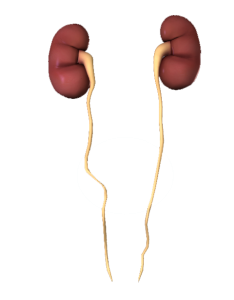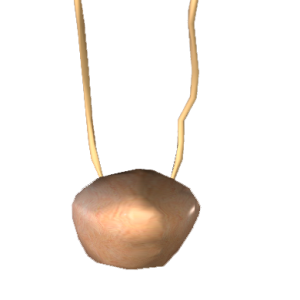Urinary System Explained
Categories: CTE, New Videos Added to CTE Skills Library
Introduction to the Urinary System
The Urinary, or Excretory System is another system by which the body rids itself of unwanted Toxins or (waste). Basically, the urinary system’s main purpose is to maintain the body’s “homeostasis”. In other words, the urinary system’s main function is to maintain the body’s acid-base balance.
It is important to know, the human organism was meant to stay healthy and systems such as the urinary, digestive, skin, and other vital organ systems were created for that purpose. They are designed to keep the body healthy and able to withstand diseases. But if the load of Toxins and/or waste is greater than what these systems can handle, guess what happens. You can learn more about this, by watching CTE skills’ “Introduction to the Cell” and see how disease is created. Toxic build-up in the body can cause many issues for people, such as lethargy, illness, organ imbalances, the list is endless when our systems are not working to their optimum level. This is why finding ways to helps ourselves in day-to-day life is important and a necessity. A dual ionic detox foot bath may be the solution to flushing out those toxins, helping our systems with doing our own ways of keeping our insides functioning.
In this introductory video on the urinary system however, we’ll just be taking a look at…
- The purpose of the Urinary System
- The structures that make it up
- The functions of each
- And how they work together to maintain balance in the body
Structures
The Urinary system, much like the integumentary system, doesn’t have many parts, but they are truly essential to the survival of the human organism.
Anatomical structures of the Urinary System.
- Two kidneys
- Two Ureters
- One bladder
- One urethra
- and the urethra meatus
Kidneys
The 2 kidneys are bean shaped in appearance. They are located on either side of the vertebral column behind the upper part of the abdominal cavity. The kidneys are protected by the ribs and a heavy cushion of fat called the adipose capsule.. They are literally suspended in the body (unattached to any other major organ). They pretty much stay up by themselves This is the reason why the kidney punch in boxing is illegal.
Each kidney is divided into two main sections: the Cortex and the Medulla.
Cortex of the Kidney
The cortex is the outer section of the kidney. It contains the majority of the nephrons. Nephrons are microscopic filtering units. These filtering units are composed of the following structures.
- Glomerulus
- a Bowman’s capsule,
- a proximal convoluted tubule
- a distal convoluted tubule and,
- a collecting duct (tubule)
Together these structures purify the blood by removing excess water, salt, sugar, metabolic products, and other substances the body needs to purge in order to maintain the ph acid-base balance and thus the “homeostasis” of the body, which is regulated by the endothelial cells, visit this page to find out more.
Medulla of the Kidney
The medulla is the inner section of the kidney. It contains most of the of the collecting tubules, which carry the urine from the nephrons through the kidney, to the Ureters.
The Ureters
The Ureters are two muscular tubes approximately 10 to 12 inches long and extending from the the renal pelvis of each kidney to the Bladder.
The Bladder
The Bladder is a hollow sac much like the stomach (gast/r) lined by a series of folds called rugae.[roo-guh] The purpose of these folds is to allow the bladder to expand as urine is collected. The Bladder typically holds up to one cup of urine and sometimes more until the urge to void (or urinate) is turned on.
Leading from the bladder is the urethra tube. Its job is to carry the urine from the bladder to outside the body.
The last structure in the urinary pathway of purging toxins from the body is the external opening to the urethra. This is called the urethra meatus. [mee-ey-tuh s]
The Urethra
Here is a very important note to make about the urethra and the sexes.
In Females the urethra is only about 1 and ½ inches long and it is separate from the reproductive system. While in the Males the urethra is approximately 8 inches long and before the urine exits it goes through the prostate gland.
The urethra in the Male is used by two body systems. The Urinary and the Reproductive. Only urine passes through the urethra in the urinary system. But in the Reproductive System only semen passes through. Urine and semen will never pass at the same time through the Male’s urethra.
Urine
What exactly is urine? Urine is the waste product that the Urinary system is responsible for eliminating from the body. Urine is 95% water. The other 5% is made up of urea, uric acid, creatinine, mineral salts, various pigments and sugar. Excess sugar found in the urine can be indicative of diabetes.
In a day’s work the kidney can filter up to 150 quarts of liquid, resulting in about 1 ½ to 2 quarts of urine. That’s if you are drinking the proper amount of water.
Adrenal Glands
Last but not least each of the Kidneys (two) have the adrenal glands attached to the upper portion of the kidney.. these glands have very important functions that will be explained in the endocrine system.
RECAP: Urinary System or Excretory system
The basic purpose for this system is to cleanse the blood. It filters out toxins such excess sugars, and salts as well as other substances
The main structures or anatomical parts are:
- Two Kidneys
- Two Ureters
- One Bladder
- One Urethra and…
- The urethra meatus
Each Kidney is divided into the Cortex and Medulla. Inside the Cortex of both kidneys are thousands of microscopic filtering units called Nephron.
Remember, it is important to drink lots of water in order for the kidneys and urinary system to continue to function properly. You could also try a kidney cleanse to give your kidneys a boost if you are worried about the amount of toxins you are consuming.
Thanks for watching. For more videos on the Urinary system, visit CTESkills.com





